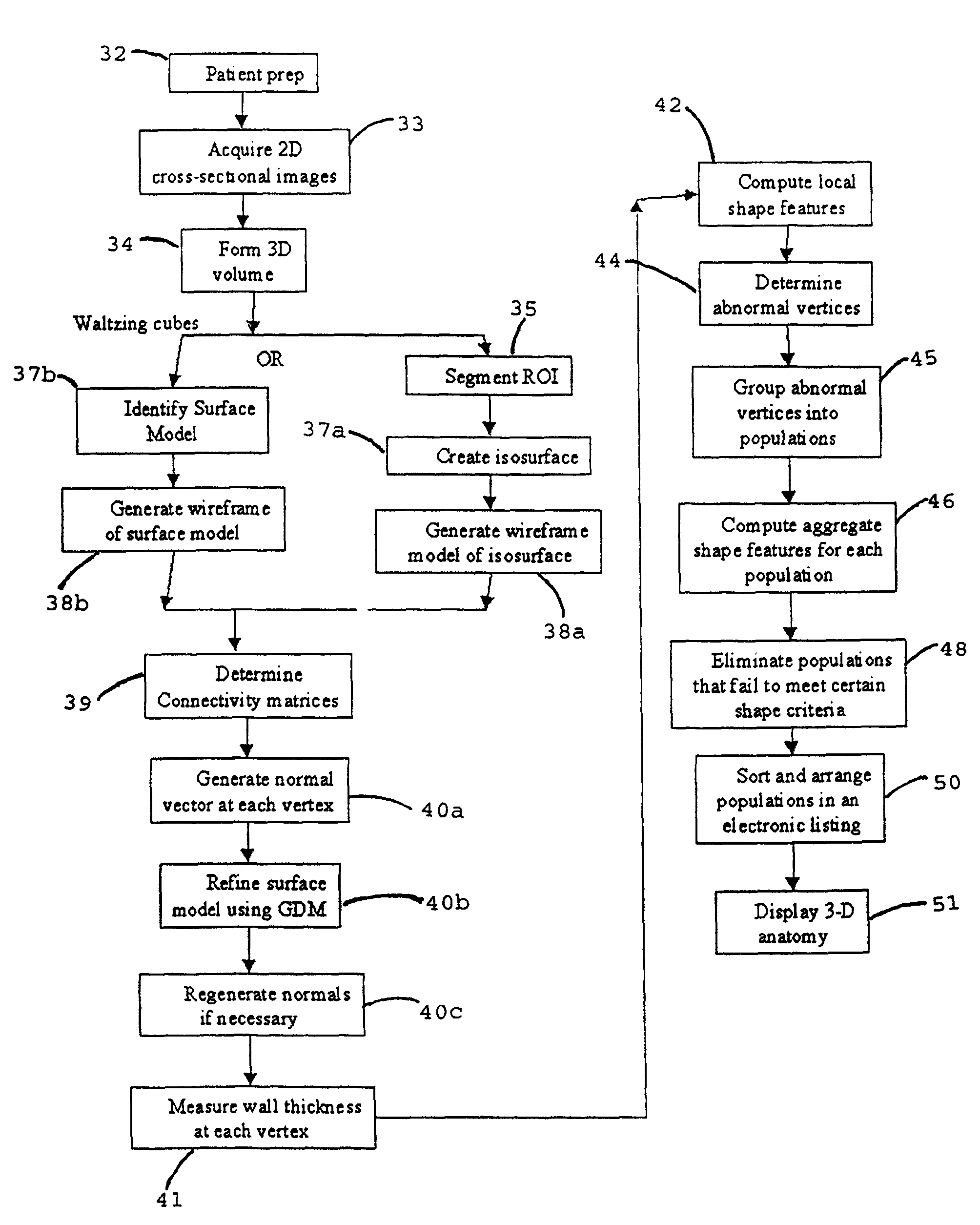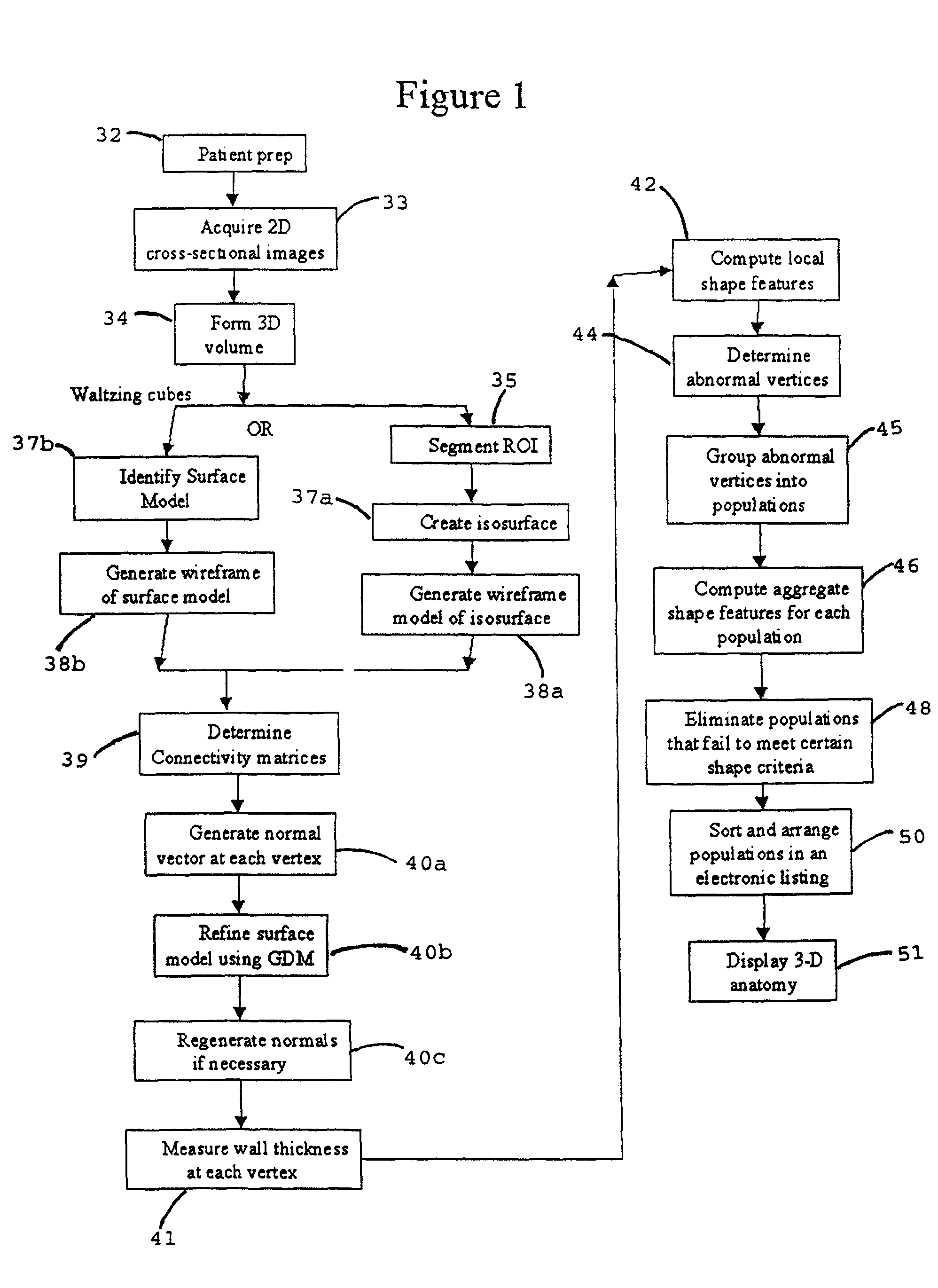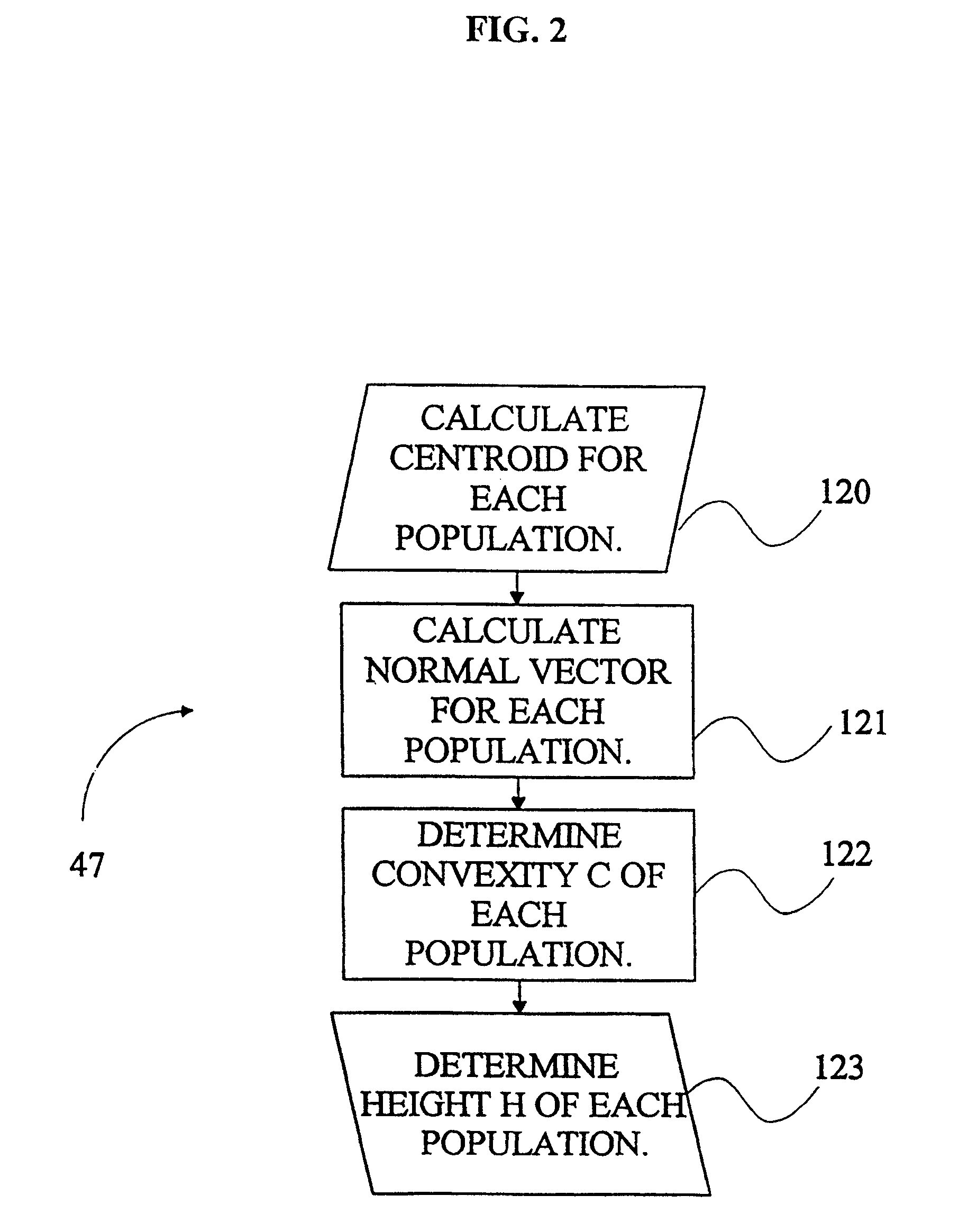Virtual endoscopy with improved image segmentation and lesion detection
a virtual endoscope and image technology, applied in the field of virtual endoscope with improved image segmentation and lesion detection, can solve the problems of colonoscopy patients being exposed to the risk of bowel perforation, under-utilization of such screening, and inability to access the entire colon
- Summary
- Abstract
- Description
- Claims
- Application Information
AI Technical Summary
Benefits of technology
Problems solved by technology
Method used
Image
Examples
Embodiment Construction
[0031]The present invention generally relates to a computer-implemented method and system, as schematically represented in FIGS. 1, 2, and 4 for generating interactive, three-dimensional renderings of three-dimensional structures generally having a lumen. The structures are usually in the general form of selected regions of a body and in particular, human or animal body organs which have hollow lumens such as colons, blood vessels, and airways. In accordance with the present invention, the interactive three-dimensional renderings are generated in a computer-controlled process from a series of two-dimensional, cross-sectional images of the selected body organ acquired, for example, from a helical computed tomography (CT) scan. The three-dimensional renderings are interactive in that such renderings can be manipulated by a user on a visual display of a computer system, such as a computer monitor, to enable movement in, around and through the three-dimensional structure, or slices or c...
PUM
 Login to View More
Login to View More Abstract
Description
Claims
Application Information
 Login to View More
Login to View More - R&D
- Intellectual Property
- Life Sciences
- Materials
- Tech Scout
- Unparalleled Data Quality
- Higher Quality Content
- 60% Fewer Hallucinations
Browse by: Latest US Patents, China's latest patents, Technical Efficacy Thesaurus, Application Domain, Technology Topic, Popular Technical Reports.
© 2025 PatSnap. All rights reserved.Legal|Privacy policy|Modern Slavery Act Transparency Statement|Sitemap|About US| Contact US: help@patsnap.com



